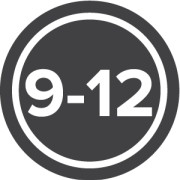
Elections and Voting
This unit is designed to provide students with an introduction to the electoral processes of the American political system. Students will develop a strong foundation that will inform them of their choices and encourage civic involvement. The Elections and Voting unit guides students to a deep understanding of concepts and processes across the political spectrum through simulations, presentations, vocabulary-building activities, and a mock election.
Topics at a Glance: state voting laws | youth voting guide | running for president | political parties | political spectrum | political candidates | voting rights | voting history | electoral process | campaigning | political campaigns | incumbency | primaries | caucuses | conventions | public opinion polling | apportionment | ranked-choice voting | mail-in voting | peaceful transfer of power
Choose Grade Level:
-
Game
Cast Your Vote
-
Lesson Plan
Voting Rights
-
Lesson Plan
Midterm Math (Infographic)
-
Lesson Plan
Rank Your Choice (Infographic)
-
Lesson Plan
The Spectrum of State Election Laws (Infographic)
-
Lesson Plan
The Poll Picture (Infographic)
-
Lesson Plan
Peaceful Transfer of Power (Infographic)
-
Lesson Plan
Running for President (Infographic)
-
WebQuest
Reapportionment & Redistricting
-
Lesson Plan
Party Systems











